
London’s First Red Bus: A Revolutionary Milestone
On this day in 1925, the first Red Buses with the enclosed roof’s appeared for the first time in London Please note: it is not
Incredible history records of the RT fleet i.e. snapshot of RT3251 LLU 610
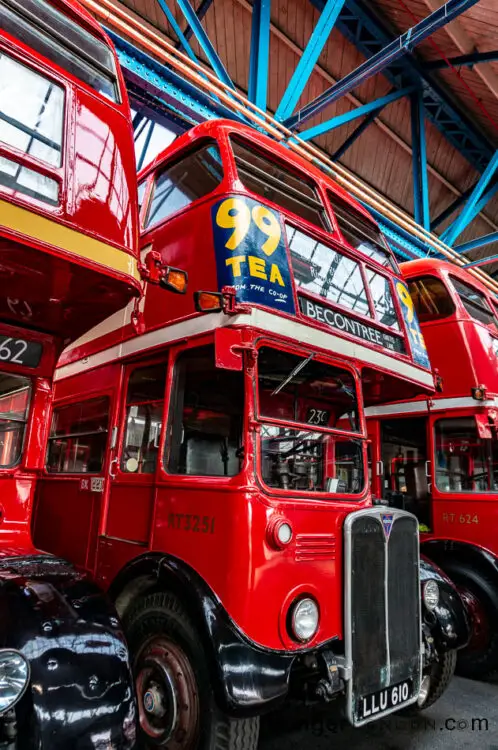
Did you used to work on these beautiful machines? Check out the comments below from those who did, and join the conversation
To all former mechanics, drivers and conductors, AEC RT & RF Buses Tweet
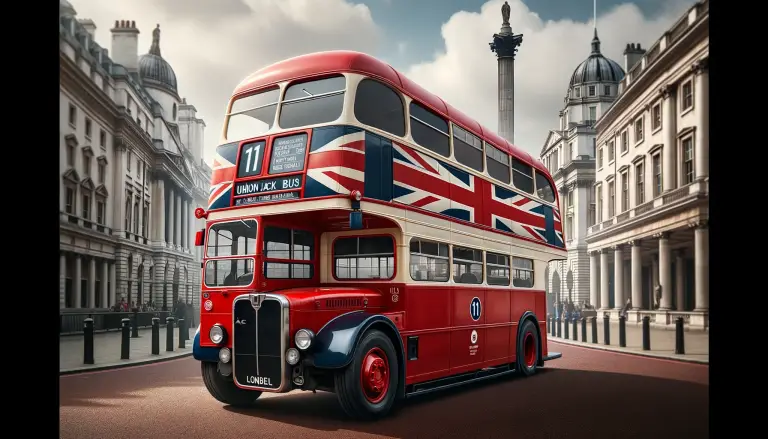
Take a peek inside the world of vintage RT London buses, which first entered service over 80 years ago. To commemorate the 40th anniversary of their final journey in Barking in 1979, the world’s largest preserved RT fleet returned to the town’s streets on 30 March 2019, in an event organized by the London Bus Museum.
This iconic bus was developed in the 1930s by the Associated Equipment Company (AEC), Britain’s leading manufacturer of lorries and buses from 1912 to 1979. The prototype, numbered RT 1, was completed in 1938 and went into trial service the following year.
London Transport initially planned to take over 300 of the new type, but with the outbreak of the Second World War only 150 were delivered.
A brand new RT bus in the late 1930s cost around £4,000, complete with AEC’s powerful 9.6-litre diesel engine and 56-seat bodywork.
After the war, full-scale production resumed. Between 1947 and 1954, London Transport received 4,674 RT-class buses, making it the largest single fleet of standardised double-deckers in the world at the time. The very last RT in normal London service, RT 624, ran from Barking Garage on 7 April 1979 and is now preserved by Ensignbus.
The RT bus, developed by AEC in the 1930s, became an iconic London vehicle.
• Prototype Development: The prototype RT 1 was completed in 1938 and entered trial service in 1939.
• Production Delays: Initially, London Transport planned to acquire 300 buses, but only 150 were delivered before WWII.
• Cost and Features: A late 1930s RT bus cost about £4,000, featuring a 9.6-litre diesel engine and 56 seats.
• Post-War Production: Full production resumed after the war, with 4,674 RT buses delivered between 1947-1954, creating the largest fleet of standardized double-deckers.
• Legacy: The last RT bus in service, RT 624, ran on April 7, 1979, and is now preserved.
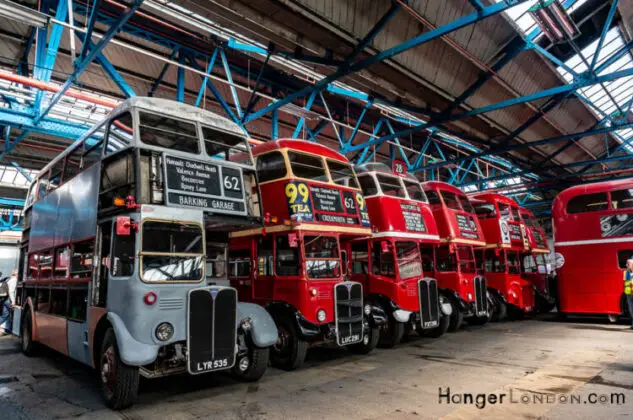
In the mid-20th century, the RT class became one of the most popular and recognizable double-deck buses in the United Kingdom. Built by AEC (Associated Equipment Company) in partnership with London Transport, the RT entered full service in 1947 after its pre-war prototype from 1938. With over 7,000 units produced, it became the most numerous type of bus operated in London, setting the standard well before the Routemaster’s arrival.
The RT was a front-engined double-decker featuring an open rear platform for easy boarding and alighting. Primarily powered by AEC’s 9.6-litre diesel engine, some variants (the RTL class) used the Leyland 0.600 engine. The bus accommodated 56 passengers—27 on the upper deck and 29 on the lower—making it suitable for both heavy city traffic and suburban routes.
Renowned for its reliability, smooth ride, and solid construction, the RT quickly became the backbone of the London Transport fleet. Its outstanding reputation made it popular with crews and passengers alike, and it remained a familiar sight on the streets of London for over three decades.

In 1950, London Transport introduced the RF class, based on the AEC Regal IV single-deck chassis. Unlike the RT double-deckers, the RF was a single-level bus with an underfloor-mounted AEC engine, providing a quieter ride and increased passenger space inside.
Over 700 RFs were built, making them London’s largest single-deck fleet. They primarily operated on country services and Green Line coach routes, although red RFs also served suburban and central London routes. Most were powered by AEC’s 9.6-litre diesel engine with a pre-selector gearbox, while later models received updates during overhauls.
The RF was distinct from the RT, never being a double-decker, although they often operated alongside one another. The RT accommodated 56 passengers, while the RF seated approximately 41 to 53, depending on the layout.
Built to London Transport’s exacting standards of reliability, ease of maintenance, and longevity, the last RFs were withdrawn in the early 1980s, whereas the RT fleet had been retired in 1979. Today, both classes are cherished and preserved, symbolizing London’s mid-20th-century transport history.
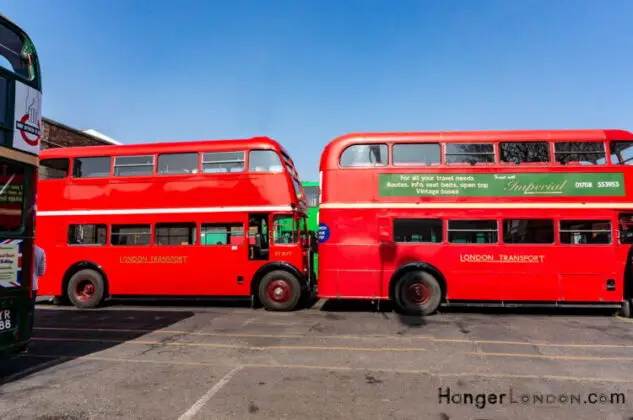
London Transport was not the only operator of RT-type buses. In the 1940s and 1950s, a limited number of chassis were supplied to provincial fleets such as Glasgow, Rhondda, Aberdeen, West Riding, Halifax, Grimsby, Birmingham, Devon General, Coventry, and St Helens.
Between 1946 and 1951, around 100 chassis were delivered to ten other operators. The first non-London example, Glasgow Corporation’s [plate_number_1], was scheduled to appear at the 1939 Commercial Motor Show, which was ultimately cancelled due to the war. Outside London, RTs showcased various liveries, with bodies designed by different coachbuilders, including Weymann, Roe, Northern Counties, Park Royal, and Metro-Cammell.
RT and RF buses today
Today, both RT and RF buses are highly prized by enthusiasts. Many have been restored to their original condition and regularly appear at heritage events or on special services. Their presence evokes a bygone era when London’s streets were dominated by these classic red vehicles.
AEC RT buses in the movies
No film set in post-war London is complete without the red RT. When withdrawn from service, many were hired out for film and TV work.
Summer Holiday (1963) – Cliff Richard and friends travelled across Europe in a red RT, with three vehicles (RT 4326, RT 2305 and RT 2366) used in filming.
Live and Let Die (1973) – James Bond memorably drives an RT through a low bridge.
Numerous black-and-white productions of the 1940s and 50s also used RTs as atmospheric London street furniture.
(Note: The “Knight Bus” in Harry Potter was a converted Routemaster, not an RT; and the buses in The Italian Job were Bedfords, not RTs.)
The Number 11 bus is one of London’s oldest services, first introduced in 1906. From the late 1940s to the 1950s, it was extensively operated by RT double-deckers, which carried Londoners past iconic sites such as the Houses of Parliament, St Paul’s Cathedral, and Chelsea. For many, the sight of an RT on the 11 became a symbol of the capital itself.
In the early 1960s, the AEC Routemaster gradually replaced the RT fleet on this route, and these buses continued to serve the 11 for decades, becoming equally iconic.
Today, Route 11 remains in daily service, operated by modern New Routemasters. It links Fulham with Waterloo, providing one of the most scenic journeys through the heart of London, blending over a century of history with the city’s ever-changing streetscape.
Conclusion
The RT class remains one of the most important buses in London’s history. Outnumbering even the Routemaster in their heyday, RTs provided reliable service from 1939 until their final withdrawal in 1979. The RF single-deckers, meanwhile, served suburban and Green Line routes until the early 1980s.
Both types are now cherished in preservation, continuing to tell the story of London’s transport heritage to new generations.
Engine: AEC 9.6L diesel (~115 hp)
Length: 26 ft
Width: 7 ft 6 in
Height: 14 ft 5 in
Seating: 56
Standing: Not permitted in service
Engine: Leyland 9.8L O.600 diesel (~125 hp)
Length: 26 ft
Width: 7 ft 6 in
Height: 14 ft 5 in
Seating: 56
Standing: Not permitted in service
Engine: Leyland 9.8L O.600 diesel
Length: 27 ft
Width: 8 ft 0 in
Height: 14 ft 5 in
Seating: 56
Standing: Not permitted in service
Engine: Volvo 4.5L diesel + 18 kW hybrid motor (~250 hp combined)
Length: 36 ft
Width: 8 ft 3 in
Height: 14 ft 4 in
Seating: 62
Standing: 25 (total ~87 capacity)
The RT family of buses (RT, RTL, RTW) were compact, narrow double-deckers built for London’s post-war streets. All seated 56 passengers with no standing permitted, and their design was tightly constrained by London Transport’s standards. The New Routemaster, by contrast, is almost 10 feet longer and significantly wider, with hybrid power and capacity for nearly 90 passengers including standees.
When the RT family was introduced in the 1940s, London’s streets were narrower, traffic lighter, and demand for mass passenger capacity was spread more evenly across the day. A compact 26-foot bus, seating 56, was ideal for weaving through the city while still carrying full loads.
Today, however, that small form factor would be far less efficient. With London carrying millions more daily journeys, a bus restricted to 56 seated passengers and no standing capacity would struggle to meet demand and would likely create road congestion by needing more vehicles to cover the same work.
This is one of the reasons London experimented with the bendy buses (articulated single-deckers) in the early 2000s. At nearly 60 feet long and carrying up to 140 passengers, they solved the capacity problem but created others: they were too large for many London streets, caused congestion when boarding or turning, and safety issues arose from open boarding. Ultimately, they were withdrawn in 2011.
The New Routemaster is a compromise between the two extremes: longer and wider than an RT, but still manoeuvrable in central London. It carries around 87 passengers (62 seated, 25 standing), balancing higher capacity with the need to navigate tight streets.
Take a peek inside the world of vintage RT London Buses, which entered service 80 years ago this year. To celebrate the last journey in Barking 40 years ago in 1979, the finest collection of RT buses in the world, were driving again through the streets of Barking. 30th March 2019. Courtesy of the London Bus Museum.
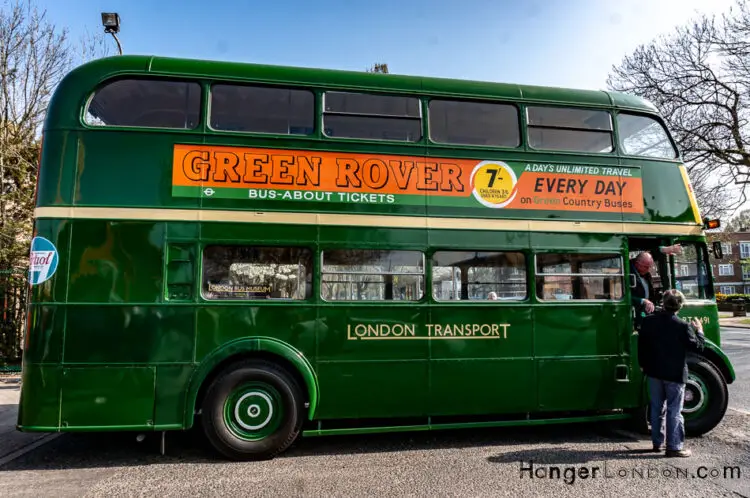
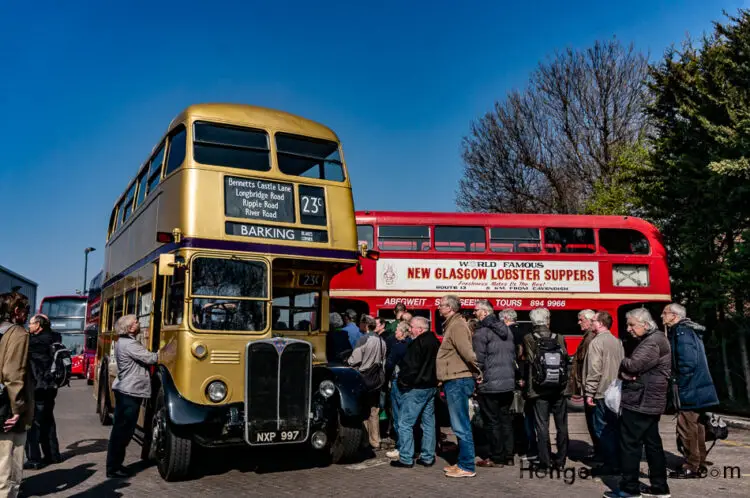
Related Posts

On this day in 1925, the first Red Buses with the enclosed roof’s appeared for the first time in London Please note: it is not
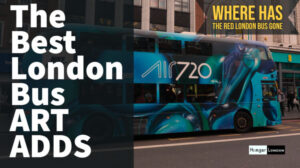
Advertising on London buses is a highly effective way to reach a diverse audience in one of the world’s most iconic cities. With over 8,600
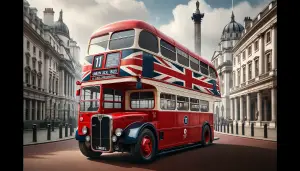
Incredible history records of the RT fleet i.e. snapshot of RT3251 LLU 610 RT buse in the garage Did you used to work on these
What was the bus that preceded the RT in London and the Bristol Lodekka in Essex?
In London, the bus that preceded the RT was the AEC Regent III. The AEC Regent III was a type of double-decker bus produced by the Associated Equipment Company (AEC) and was in operation before the RT model.
In Essex, the bus that preceded the Bristol Lodekka was the Bristol K5G. The Bristol K5G was a double-decker bus produced by the Bristol Tramways and Carriage Company and was commonly used in various regions, including Essex, before the introduction of the Lodekka model.
I worked on RT and RF buses in 1969/71 when employed as Acting Night Chargehand Bus Mechanic at Leatherhead London Country Bus Co. Garage … can someone please remind what types of nuts / bolts were used … would they have been UNF or Whitworth? … Unlikely they were AF. I was issued with a standard tool kit comprising: hammer, brake adjuster socket (used frequently) two screwdrivers (one small one large), three open ended spanners, two ring spanners and a couple of box spanners with a bar … these few tools enabled completion of most maintenance tasks … most mechanics gradually bought their own socket sets which were very expensive … in those days there were no quality Taiwanese / Chinese tools … all socket sets on sale were of UK or European manufacture.
It’s fascinating to hear about your experience working on RT and RF buses back in the late ’60s and early ’70s at the Leatherhead London Country Bus Co. Garage.
It must have been a truly different era in terms of maintenance and tools compared to today’s standards.
In response to your question about the types of nuts and bolts used on those buses, it’s likely that a combination of UNF (Unified National Fine) and Whitworth fasteners was used.
The specific type of fasteners could have varied depending on the manufacturer’s specifications and the parts of the buses you were working on.
UNF threads were becoming more common during that period, but Whitworth threads might still have been in use in some applications.
Your description of the toolkit issued to you certainly brings a nostalgic smile to our faces.
I notice in all historic reference to the RT, no one has ever made reference to the experimental derivative; the RTC 1. This was an experimental Greenline Coach version, that did not, for whatever reason, prove successful.
It was after trials, allocated to Leatherhead Garage and worked Route 468, from Chessington Zoo to Bookham or Effingham, I can’t remember which, via Epsom, for many years from 1948.
Does anyone know more about this?
An interesting topic of the RTC 1, is the experimental Greenline Coach version of the iconic RT bus. Found some references that it operated from Leatherhead Garage and operated Route 468 from Chessington Zoo to Bookham or Effingham via Epsom provides. Could do with confirmation of that.
If anyone has more information to share about the RTC 1 or its trials, it would be a wonderful opportunity to enrich our understanding of this unique piece of transit history.
found a picture of RTC1 https://www.flickr.com/photos/23875695@N06/43722621671/
Drove RTs for the first 7 years on this job, last one was RT 2541 a sub on route 180 in August 1978. Now driving hybrids on night buses out of Plumstead. I have always harboured an ambition to drive a pre-war example.
Jeff White
Great bus the RT drove one 163 from new cross I was 21 they had just drop the she requirement from 25 parliament hill to plumstead common with my conductor Newley arrived Kiefe Cave from Barbadious (I’ll have a barley wine ) we used to split up the spare change he couldn’t count to well and have a pint at both ends where we had our break quite often in the pub ??
Good times, that’s what you call a good work lifestyle balance, a pint at both ends, brilliant!
Great memories, there is a video we shot, of these buses driving out of Barking Bus Garage. https://youtu.be/wpZNCbJXQGY
Is it me or do they drive these machines fast, Great sound, perfect size factor for the London roads.
thanks for sharing your memories Derek…do you have any old snaps from these times.
great times working on these as a mechanic during the 1960,s at Ponders End ,and Palmers Green